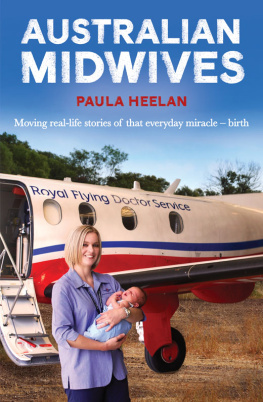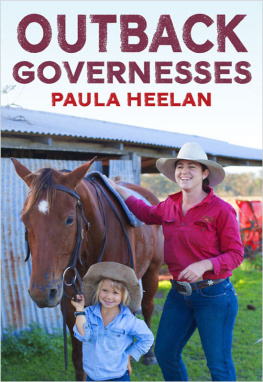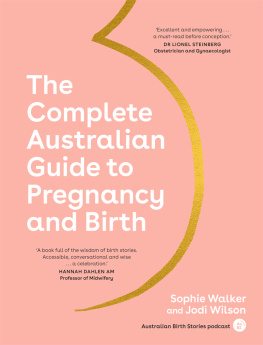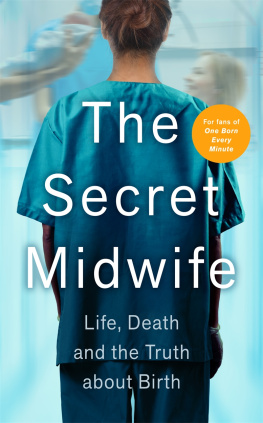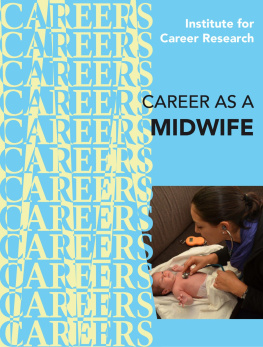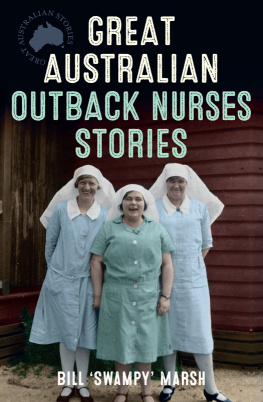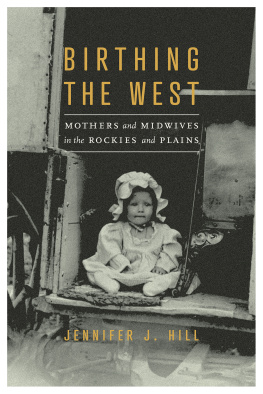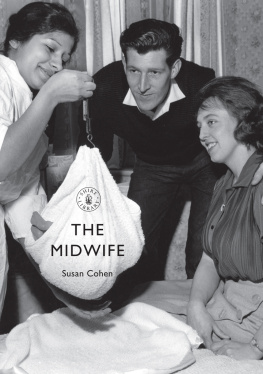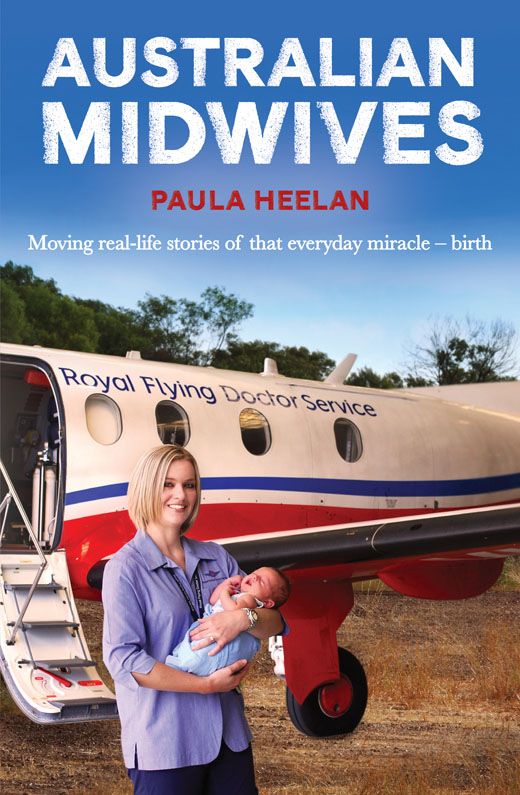For Peter
CONTENTS
Tasked with pilot Ben Ragg, known as Raggs, 26-year-old CareFlight nurse and midwife Lane Johnson was called out at three-thirty in the morning to pick up a woman on Groote Eylandt who had miscarried at 19 weeks pregnant. She was experiencing a postpartum haemorrhage (PPH) and had lost more than 800 millilitres of blood. Lane felt confident she could manage. Health staff at the clinic had stopped the bleeding, but the mother still needed to come to Darwin, says Lane. She prepared for the flight and packed the drugs she thought might be needed as well as two units of blood. At 4 am Raggs lifted the King Air an eight-person, two-stretcher, twin-engine turboprop aircraft off the runway.
CareFlight is an aeromedical charity that provides rapid-response critical care. Aircrew, medical teams and coordinators deliver the best care they can as soon as possible essentially bringing the right team to the right patient at the right time. Flight doctors and nurses transport medicine and care for injured patients who need emergency treatment at the scene of the incident. They also transport seriously ill patients and expectant mothers who need to be moved between clinics and hospitals.
With the very early morning start, Raggs and Lane were already tired. Halfway into the flight, Raggs, whos a very funny bloke, decided to keep me awake by telling me a joke, Lane says.
Have you heard the one about the goat? No? Well, theres a bloke sitting in a bar
Distracted by a strong odour, Lane interrupted him. Raggs, can you smell that? I can smell smoke, a burning smell, she said. Her heart skipped a beat when suddenly she heard a cold, mechanical breathing sound coming through the radio, like someone speaking through a scuba mask with a microphone in the regulator. Im thinking, What the hell? I turned to see Raggs in the cockpit wearing a mask. He looked like Darth Vader out of Star Wars. I asked him if he was wearing an oxygen mask.
Phhrssffhhh, yes, he breathed.
I thought, What? Wheres mine?
Phhsssfhhh, came Darths reply again. You dont get one.
Lane looked wildly around to find Raggs hooked up to medical oxygen. Aware something was wrong, her heart was in her mouth. He looked like someone out of Top Gun on his own little pilot mission, she says. Raggs never panics hes as cool as a cucumber. But I could see he was clearly distressed by the burning smell. Later he told me he thought if we both became incapacitated it wouldnt be good, so thats why he put the giant oxygen mask on. I just didnt get one down the back. I was terrified. Raggs figured out the heating element had burnt out and just needed to be switched off. Meanwhile, Im down the back panicking away, thinking, We might explode any second. Im going to die on this plane. Raggs turned off the heating and checked with Lane whether or not the smell had gone. When I confirmed it had, he took his precious mask off.
At that point, Raggs and Lane had arrived at Groote Eylandt, Australias third-largest island with an archipelago that includes more than 40 smaller islands. On the western side of the Gulf of Carpentaria and about 640 kilometres south-east of Darwin, Groote Eylandt is the homeland of the Anindilyakwa people. The low-lying island measures about 50 kilometres from east to west and 60 kilometres north to south. A hilly island, its coloured by extensive red plains, a rugged sandstone plateau, sand plains and savanna woodland dominated by stringybark eucalypts and Darwin woolly butt. There are patches of monsoon vine forest, pandanus and citrus pine, and Casuarina trees and Banyan figs give shelter and shade near the beaches.
They picked up the woman, who had been pregnant with her second baby. Raggs and Lane carefully placed her on board. She was still bleeding slightly, but her obs (observations) were fine and Lane didnt think she needed to give her blood. When she noticed the woman was clutching a tiny container with her deceased baby inside, she felt wretched. It was very impersonal and the sight of this poor woman holding it was very, very sad, Lane says. While Lane and Raggs were settling the young woman on the plane, Lane received another call asking if she could pick up a woman at Ramingining a community on the edge of the Arafura Swamp in Arnhem Land with a population of about 800. The woman had gone into early labour at 22 weeks. As we were the only aeromedical team flying in the Territory at that time, we didnt have a lot of choice and we were only about an hour away. Lane checked with her patient, who was stable and okay, if she minded a small detour to pick up the Ramingining woman. After her own traumatic birth hours before, the woman said she just wanted to sleep. So Raggs and Lane flew into Ramingining, where they picked up the woman who was expecting her seventh child. She wasnt contracting and had been given drugs to calm the labour. In the early-morning darkness, they quietly loaded her safely on board.
With everyone secure and strapped in, Raggs took off. The plane was still climbing when suddenly the pregnant woman reached behind to where Lane was sitting and dug her nails into Lanes arm. Im pushing! she screamed. Lane grabbed the microphone to tell Raggs what was happening and to ask when she could undo the seatbelt and get up. With the aircraft still in a 45-degree climb, Raggs asked her to wait 30 seconds. Gripped with anxiety, she waited and waited and held the womans hand, telling her she was doing well and to breathe, just breathe through it. When Raggs gave the okay to unbelt, Lane whipped up and knelt down beside her patient. As the small area at the back of the aircraft only takes two stretchers lying down - one on each side there was very little room to move.
The woman had opened her legs and I could see a bulging sack of fluids discharging. I was down the back and too far from the two-way mic to be able to relay information to Raggs. I thought, Oh my God, this is not happening. She raced back up to the area behind the cockpit to grab her drug bag and neonatal bag valve mask (BVM), which is a hand-held device used to provide positive pressure ventilation to patients who are not breathing adequately. With only a small birthing bag kept on board for emergencies, Lane worried that she didnt have any of the regular birthing equipment like a neonatal cot or even a simple hand-held neopuff automatic ventilator. The first patients baby had died and Lane hadnt expected to have to deal with the actual birth of a baby. Frightened about what might unfold, her hands were shaking. She tapped Raggs firmly on his shoulder. He turned to her and took off his mic. Above the roar of the engines, she yelled, I think were about to have a baby, you need to fly faster.
Lane returned to her patient and plugged in the oxygen. She had her neonatal BVM and drew up the drugs in preparation for the mum. Within minutes the woman pushed out the baby. Being tiny, it was still enclosed in the gestational sack that hadnt burst.
Just seconds after the birth, the sack popped. And there, in front of her, was a beautiful little boy. Lane rested him in her hand. He reached from the tip of her fingers down to her wristwatch. She could see the baby was gasping for air and she needed to think level-headedly about what to do next. His arms and legs were in a starfish position and he seemed to be trying to close his hands to cover himself. He was vigorous and very much alive. I clamped and cut the cord.
The plane was unusually cold because Raggs had had to turn off the heating system. Lane anxiously searched around for something warm to wrap the baby in. She found a plastic bag and swathed him in it. He was still gasping for air. So sitting cross-legged on the aircraft floor with the baby in her lap, Lane began ventilating him, giving him slight breaths. His mum looked over lovingly and cooed at her baby, Lane recalls. I explained to her that he was very, very tiny, but he was alive. Suddenly, the mother let Lane know she felt like pushing again. I placed the baby, still in the plastic bag, carefully on her chest and said she could have a little cuddle while I just took care of her. The mother pushed out the placenta without any problems, and while very small, it looked complete.

